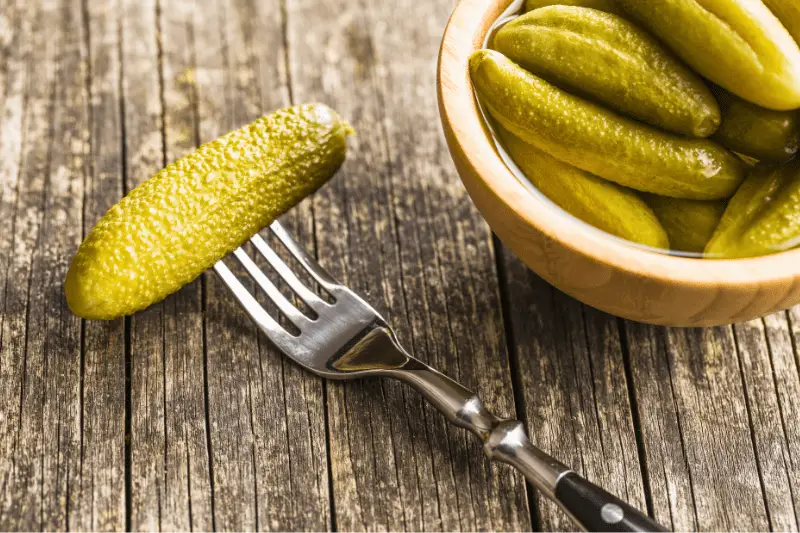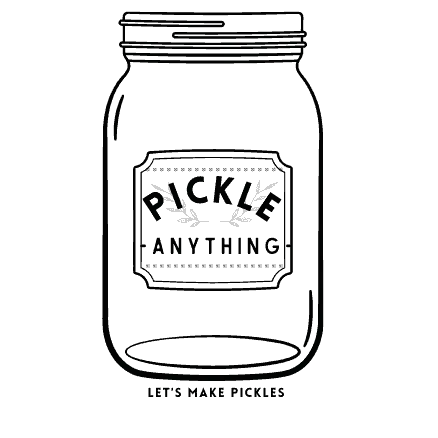Are you interested in preserving your fresh fruits and vegetables, but don’t have the time or patience for traditional canning methods?
Quick pickling is the perfect solution!
This easy and quick preservation method allows you to enjoy your produce longer and adds a delicious tangy flavor to your dishes.
In this article, we’ll cover everything you need to know about quick pickling, from the benefits and basic techniques to the best vegetables to pickle and delicious recipe ideas.

Benefits of Quick Pickling
Before we dive into the details of quick pickling, let’s discuss the benefits. Quick pickling is a simple and affordable way to preserve your fresh produce, extend its shelf life, and add a new dimension of flavor to your meals. Here are some of the main benefits of quick pickling:
1. Preserves Fresh Produce
Quick pickling allows you to preserve your fresh fruits and vegetables for a longer period, so you can enjoy them even after their season ends. This is especially useful when you have an excess amount of produce that you don’t want to go to waste.
2. Adds Flavor and Texture
Pickled vegetables add a tangy, sour flavor and crunchy texture to your dishes, making them a delicious addition to sandwiches, salads, and bowls.
3. Easy and Quick
Quick pickling is a simple and fast method that requires minimal ingredients and equipment. You can have your pickles ready in as little as a few hours or overnight, depending on the recipe.
Basic Techniques of Quick Pickling
Quick pickling involves preserving vegetables or fruits by soaking them in a vinegar and water solution, along with sugar, salt, and spices. Here are the basic techniques of quick pickling:
1. Choose Your Vegetables
Not all vegetables are suitable for quick pickling, as some have a high water content and won’t hold up well. Some of the best vegetables for pickling include cucumbers, carrots, onions, peppers, cauliflower, and green beans. You can also use fruits like apples, pears, and peaches.
2. Prepare Your Brine
The brine is a mixture of vinegar, water, salt, sugar, and spices that give the pickles their distinct flavor. You can experiment with different types of vinegar, like apple cider or white vinegar, and spices like dill, garlic, or peppercorns.
3. Sterilize Your Jars
To ensure that your pickles stay fresh and safe to eat, it’s important to sterilize your jars before filling them with the vegetables and brine. You can do this by boiling them in water for 10 minutes or running them through the dishwasher.
4. Pack Your Jars
Once your jars are sterilized, pack them with your vegetables and pour the brine over them, leaving some room at the top. Seal the jars tightly and let them sit in the fridge for a few hours or overnight, depending on the recipe.
5. Enjoy Your Pickles
Your pickles are now ready to enjoy! They can be stored in the fridge for up to a month, and the longer they sit, the more flavorful they will become.
Delicious Quick Pickling Recipes
Now that you know the basics of quick pickling, it’s time to try out some delicious recipes. Here are some ideas to get you started:
1. Classic Dill Pickles
These classic dill pickles are a perfect accompaniment to sandwiches or burgers.
Ingredients
- 3-4 small cucumbers, sliced into rounds
- 1 cup white vinegar
- 1 cup water
- 1 tbsp. salt
- 2 garlic cloves, sliced
- 1 tsp. dill seeds
- 1 tsp. mustard seeds
Directions
- Sterilize a quart-sized jar and lid by boiling in water for 10 minutes or running through the dishwasher.
- In a small saucepan, heat the vinegar, water, salt, garlic, dill seeds, and mustard seeds over medium heat until the salt is dissolved.
- Pack the cucumber slices into the jar and pour the brine over them, leaving about 1/2 inch of space at the top.
- Seal the jar tightly and let it sit in the fridge for at least 6 hours or overnight before enjoying.
2. Quick Pickled Red Onions
These pickled red onions are a tasty addition to tacos, salads, or sandwiches.
Ingredients
- 1 large red onion, thinly sliced
- 1 cup apple cider vinegar
- 1 cup water
- 1 tbsp. sugar
- 1 tsp. salt
- 1/2 tsp. black peppercorns
Directions
- Sterilize a pint-sized jar and lid by boiling in water for 10 minutes or running through the dishwasher.
- In a small saucepan, heat the apple cider vinegar, water, sugar, salt, and black peppercorns over medium heat until the sugar and salt are dissolved.
- Pack the sliced onions into the jar and pour the brine over them, leaving about 1/2 inch of space at the top.
- Seal the jar tightly and let it sit in the fridge for at least 1 hour or overnight before enjoying.
Tips for Successful Quick Pickling
To ensure that your quick pickling is successful and your pickles turn out delicious every time, here are some tips to keep in mind:
1. Use Fresh Vegetables
For the best flavor and texture, it’s important to use fresh, high-quality vegetables.
2. Adjust the Flavor
Don’t be afraid to experiment with different types of vinegar, spices, and herbs to find the flavor combination that you like best.
3. Let Them Sit
The longer you let your pickles sit in the brine, the more flavorful and tender they will become.
4. Store Properly
Make sure to store your pickles in airtight containers in the fridge to keep them fresh and safe to eat.
Quick Pickling Versus Fermented Pickling
Quick pickling is different from fermented pickling in that it does not require a complex canning process or extensive time commitments.
Fermentation involves allowing bacteria naturally found on food surfaces to create lactic acid which preserves the food over several weeks or even months.
While fermented foods are fantastic for gut health due to their probiotic content; they carry with them a sour taste which not everyone enjoys.
Making a Quick Pickling Brine
To create your own quick-pickled veggies or fruits, first start by making the brine.
Combine equal parts water and vinegar in a saucepan with a pinch of sugar and salt to balance out the acidity level – this helps cut back on any overpowering sour flavors!
While white vinegar is commonly used in most recipes; you can experiment with other types like apple cider vinegar or champagne vinegar for different flavors.
Unique Pickling Options
If you’re looking for inspiration beyond traditional cucumber dills, try some unique fruit & veggie options such as cauliflower florets; sliced mushrooms; broccoli stems; asparagus spears; whole garlic cloves or even berries like strawberries/blueberries!
These new ingredients open up so many possibilities when it comes time for meal prep – not only are they beautiful in presentation but pack a punch of flavor too!
The Key to a Successful Quick Pickle
The key to successful quick pickling lies in the ratio of four main ingredients: water, acid, sugar, and salt – this creates the perfect balance between flavors of tanginess; sweetness and saltiness!
For supersharp, tangy pickles use more vinegar with about 1½ tablespoons salt.
Heat this mixture with some bay leaves, black peppercorns and mustard seeds before pouring over veggies.
Or for an all-purpose pickle recipe; use equal parts water and vinegar with a pinch of both sugar and salt then add in your desired spices.
Quick Pickling Vegetables
To start the vegetable quick-pickling process, first wash and slice them into desired shapes.
Pack them into jars alongside any additional seasonings or herbs you choose! Next, heat up your pickling brine until everything dissolves then pour it over the vegetables ensuring they are fully submerged in liquid.
Once everything is at room temperature seal up the jars tightly before storing them away in the fridge for at least one hour – or longer if you want!
Then enjoy their delicious taste which will only get better over time.
With just a few basic techniques and some simple ingredients, you can make a variety of tasty pickled vegetables and fruits.
Whether you’re a seasoned cook or a beginner, quick pickling is a fun and rewarding method to try out in your kitchen.
FAQs
- How long do quick pickles last in the fridge?
Quick pickles can last in the fridge for up to a month if stored properly in airtight containers.
- Can I use any type of vinegar for quick pickling?
Yes, you can use different types of vinegar, such as white vinegar, apple cider vinegar, or rice vinegar, depending on your preference.
- Can I reuse the brine for another batch of pickles?
You can reuse the brine for another batch of pickles, but the flavor may be less intense.
- Can I quick pickle any type of vegetable?
Not all vegetables are suitable for quick pickling, as some have a high water content and won’t hold up well. Stick to firmer vegetables like cucumbers, carrots, and onions.
- Can I quick pickle fruit?
Yes, you can quick pickle fruit like apples, pears, and peaches for a sweet and tangy addition to your salads or desserts. Just make sure to adjust the sugar and vinegar levels to suit the fruit’s natural sweetness.
